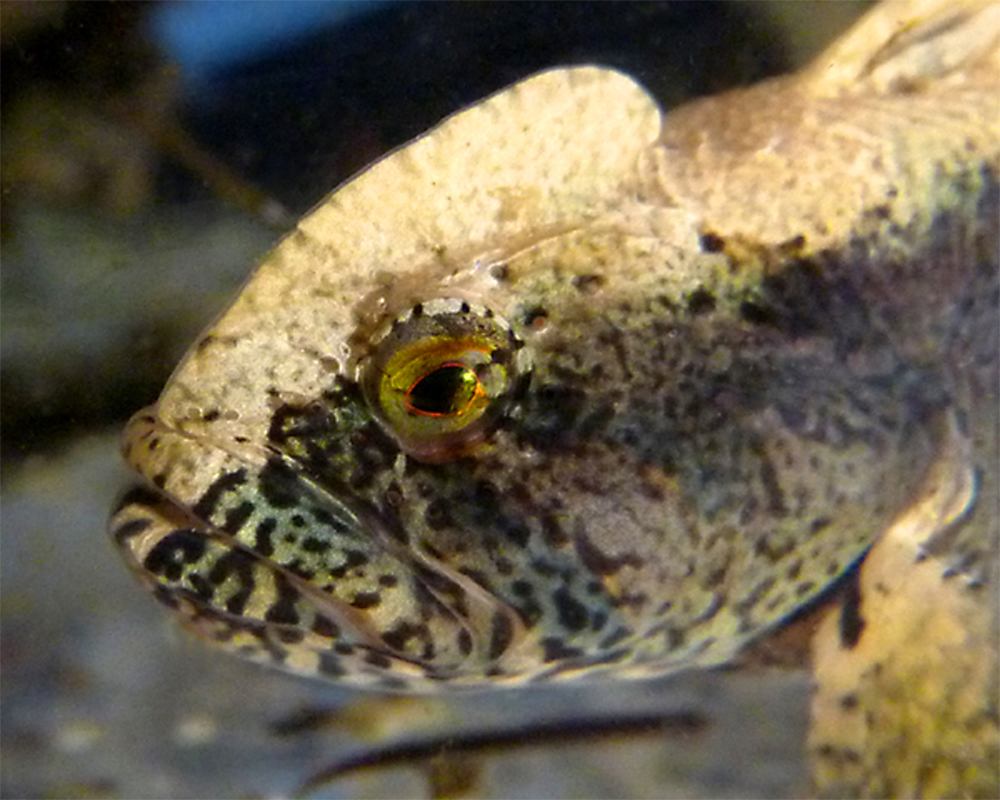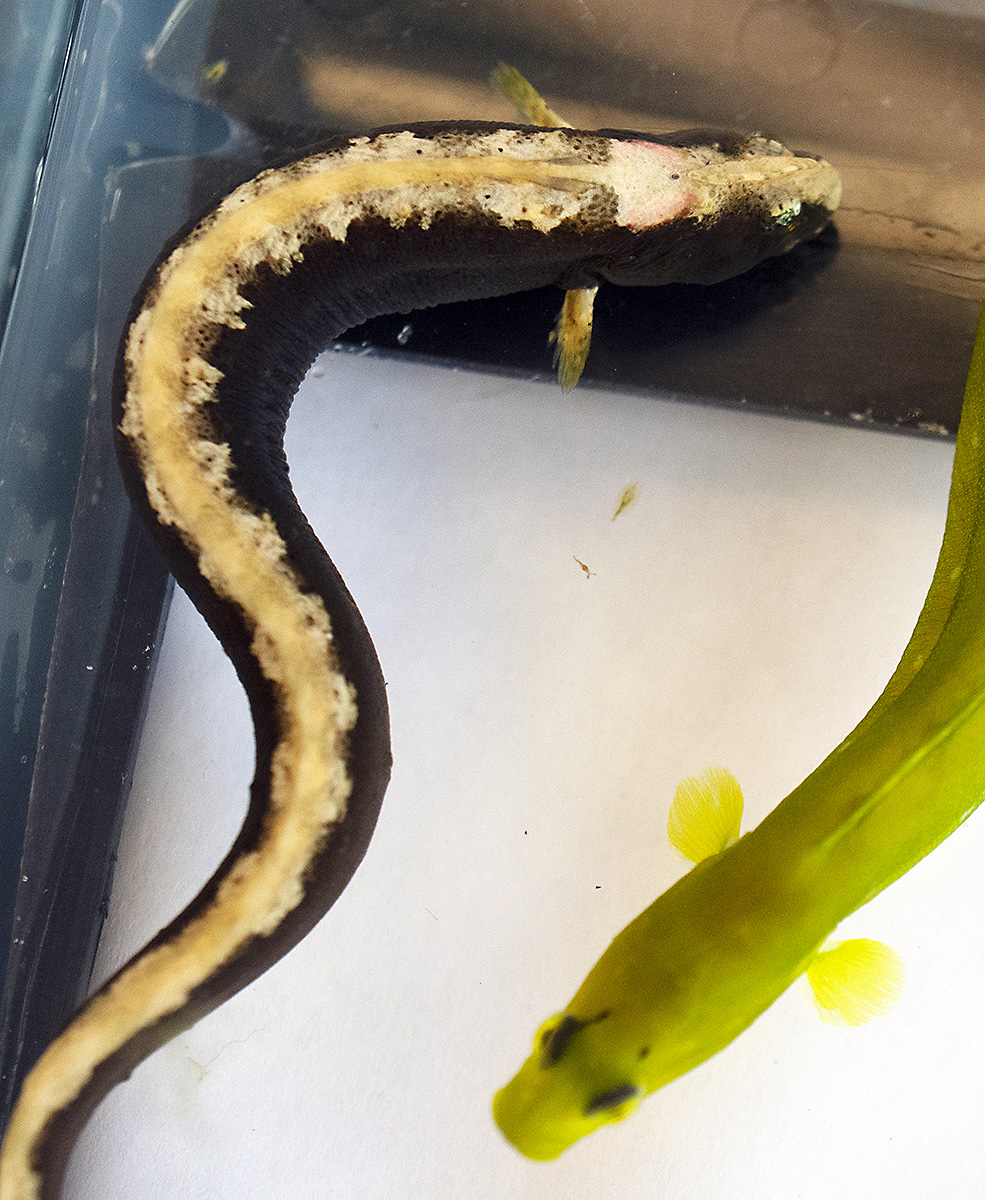Author: Ravana Eagleheart
Common Name: High Cockscomb, Cockscomb Prickleback, Crested Blenny
Scientific Name: Anoplarchus purpurescens
Size Range: The High Cockscomb usually grows to just over 7.8 inches (20cm.) in length.
Identifying Features: On the High Cockscomb, there are no pelvic fins, or if there are they are so small they are hardly noticeable. They have small pectoral fins that are usually used for balance. There is a distinct fleshy crest above the back of the head, and the dorsal fin runs along the back from behind the head to, but not into, the tail fin. As a general rule, females grow faster then males do.


Looking down on a High Cockscomb on the left with a Penpoint Gunnel (Apodichthys flavidus) on the right.
Habitat: The High Cockscomb lives in many areas ranging from Alaska to California. They live in the intertidal zone, (usually between 10ft below to the surface, but they can go as deep as 30m) and are easy to find if rocks are turned over by the edge of tide pools – remember to put the rocks back. They can remain out of water for about 15 hours if they are kept moist. They tend to live in areas with gravel or crushed shell.
Food: The High Cockscomb will eat a wide variety of foods; the most important part of their diet is green algae, but they will eat other things too such as gammarid amphipods (shrimp-like shaped amphipods), crabs, worms, plants, and eel grass.
Predators: The High Cockscomb is likely to be preyed on by types of the Wandering Garter Snake, sea birds, river otters, and raccoons. It avoids being eaten by hiding under rocks, seaweed, or other things in tidal pools to avoid being seen.
Life Cycle: During the mating season, which is January-March, the male will develop an orange color on the pectoral and anal fins, and a red color on the dorsal fins. Before mating takes place, the males will fight by biting each other to see who will mate with the female. The eggs are then laid underneath or between rocks and shells, and the females will have full responsibility for the eggs. For about 29 days the female will fan and guard the eggs until they hatch. Upon hatching, the young are left to their own defenses, and they must find their own way to survive.
Photos by Ravana Eagleheart and D. Young
References
Coleman, R. (1991). Reproductive biology and female parental care in the cockscomb prickleback,Anoplarchus purpurescens. Springer Link. Retrieved January 16, 2010 from http://www.springerlink.com/content/xu1551500l7x8574/
Eschmeyer, W.N., E.S. Herald and H. Hammann. (1983) Fish base. Retrieved January 15, 2010 from http://www.fishbase.org/summary/SpeciesSummary.php?id=3776
Kozloff, E. (1993). Seashore life of the northern Pacific coast: An illustrated guide to Northern California, Oregon, Washington, and British Columbia. Seattle, Washington: University of Washington Press.

